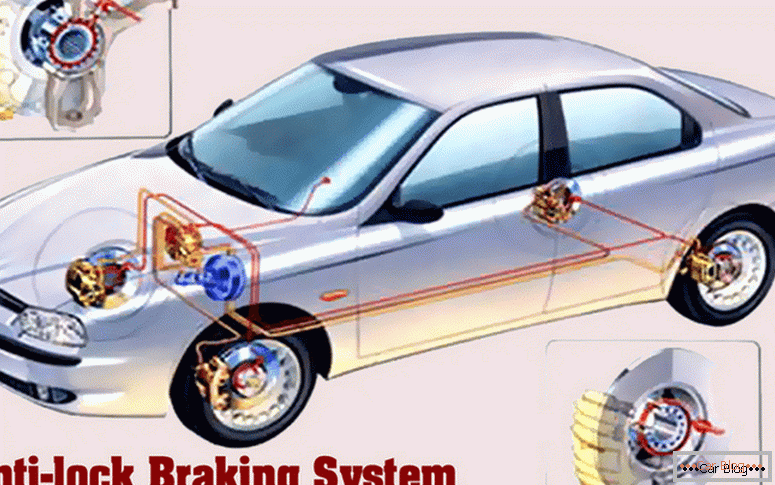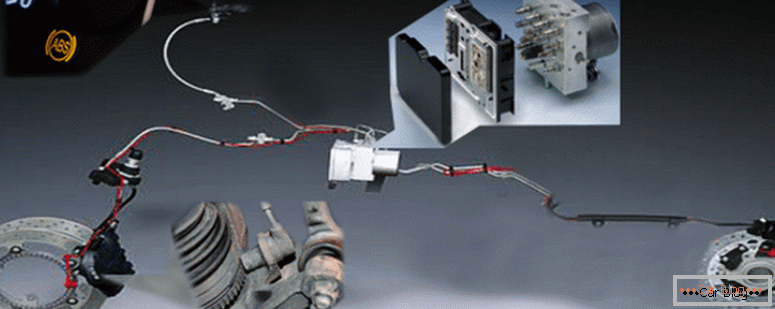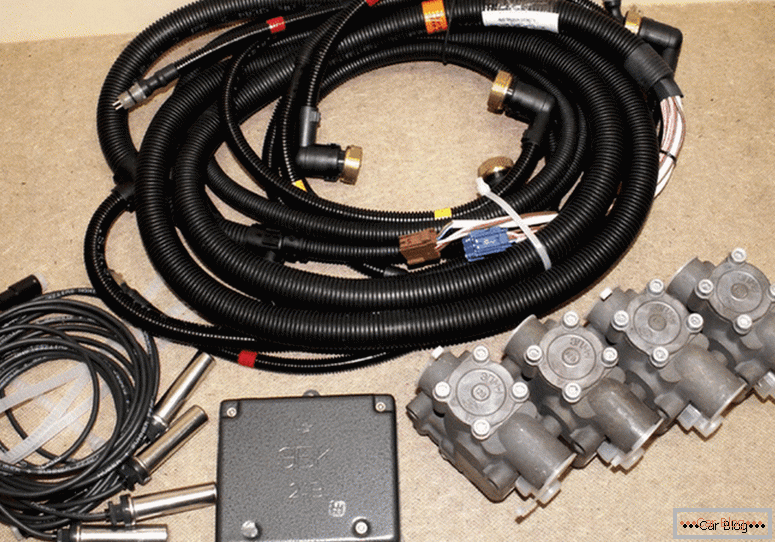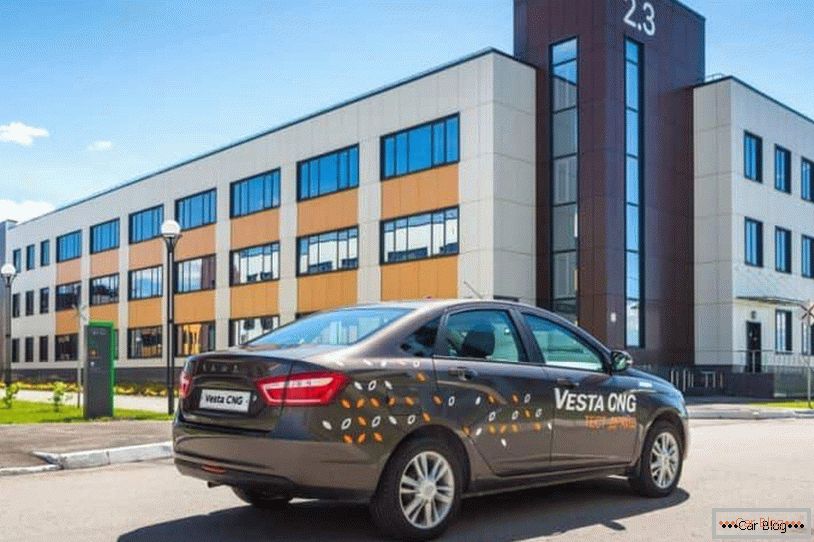Modern cars are replete with various systems that help the driver to drive safely on any road. One of the first such "helpers" was the anti-lock brake system (Anti-lock Brake System). Almost all the leading autocompany install in recent times its already not an additional bonus, but in the basic package bundle.
The principle of the ABS on the car is not to block unambiguously at the request of the driver of the wheel after pressing the brake pedal. Instead, instant monitoring and redistribution of the braking force on the wheels is carried out. Thanks to this algorithm, the car remains controllable, the course stability is ensured, and the vehicle safely reduces speed.
Content
- 1 How did the mass implementation of ABS start?
- 2 Work wheels in the car
- 3 How does the ABS on the car
- 4 The work of the built-in speed sensor
- 5 Driving with and without ABS
How did the massive implementation of ABS start
Engineers of automotive companies, performing tasks related to safety, have been developing ABS systems since the late 60s of the last century. One of the first versions of these systems proved to be quite successful. In the next decade, such units have already been introduced on production cars.
The leading company in this industry was German Mercedes. After experiments with mechanical sensors, which were installed only on one axis and transmitted information to the control unit about the pressure change in the brake circuits, the German engineers switched to proximity sensors. This helped speed up the transfer of information to the logical block. The number of false positives has also decreased, wear has disappeared due to elimination of rubbing surfaces.

The modern ABS system works on the same principle as was used in the first anti-lock systems being developed.
It was the second generation of this unit, released in the late 70s, that began to be put as a base on the prestigious cars of the time, the Mercedes-Benz 450 SEL.
The work of the wheels in the car
The main task entrusted to the ABS is to maximize the controllability of the car during braking. Since a locked wheel has significantly worse grip, its braking forces will be much lower than that of a rotating wheel. The driver does not have a spinning wheel at all. The most acceptable way to move a braking car would be a straight-line movement, however, it often turns into an uncontrolled trajectory.
See also: The amount of brake fluid to replaceInstalled unit ABS helps the wheels work efficiently at a given time, balancing between the blocking (not stopping the rotation completely) and the highest level of adhesion to the road surface. An icy road and a dry primer will give different input parameters, but in both cases the system will strive to maintain maximum controllability.
It is believed that a well-regulated anti-blocking system is able to drive a car at a higher level than a highly skilled driver for a car without ABS.
Anti-blocking calculates its work on the basis of the wheel slip coefficient. It is found as a quotient from dividing the difference between the speeds of the car and the peripheral speed of the wheels to the linear speed of the car. Under different modes of driving rate varies.

Intensive acceleration gives a high peripheral speed to the wheel at a low linear speed of the machine, and sudden braking contributes to the reverse process. An example of one hundred percent slippage are two options: a locked braking wheel and the process of slipping without movement, for example, in a dirt or puddle.
Как работает АБС на автомобиле
In modern braking systems, anti-blocking manipulates electronic valves and pump. The driver starts braking by pressing the pedal, and if slipping does not occur, the anti-lock system is not connected to these actions.
New cars are equipped with four-channel configurations of contours. Thus, control is carried out for each of the wheels. Each circuit is able to function in three modes:
- pressure increase;
- retention of its value;
- pressure drop.
When approaching the moment of wheel blocking, pressure is kept at the same level. At this time, the supply of fluid from the brake cylinder is cut off and further pressing the pedal does not lead to blocking. If the calculated slip coefficient takes on values of more than 20%, then the pressure drops through the pump. Then the slippage can, on the contrary, decrease by more than 15%, then the valves open to increase the pressure when the pedal is pressed.
There is an alternate on / off of these modes. The process often stops after a significant reduction in speed to 5-15 km / h. The driver can hear the return on the anti-lock system from the brake pedal. Even the biggest professional is not able to repeat the speed of changing such cycles.

ABS elements
If the car gets one wheel on a dry surface and the second on a slippery surface, then the vehicle with ABS will be kept straightforward by balancing the pressure for each of the circuits. If a car gets on such a road without this unit, the car will leave in the direction of the dry track, and during a sharp wheel lock, the situation will lead to a sharp turn with unpredictable consequences.
See also: Check ABS sensor testerThe work of the built-in speed sensor
The information on which further actions are based on the operation of the anti-lock system, the control module receives from the speed sensors. To understand to the end what ABS is in a car, you need to understand their work. Impulses come from four such sensors, which may differ in design, and be active or passive.
Passive option performance implies the presence of a comb in the hub block. Using analog signals, the sensor determines the rotational speed. However, such a design at low speeds can produce an error.
Active option The sensor works with a magnetic ring. By reading its tags, a binary signal is transmitted. There is no error due to rotation speeds in this case. Only an accurate impulse diagram remains.

Freelance ABS kit for truck
You need to know that all-wheel drive cars are equipped with an additional G-sensor that corrects the vehicle’s speed and acceleration readings for the ABS module.
This sensor is mounted with an accelerometer.
Riding with and without ABS
Young drivers are often interested in the method of braking a car with anti-lock. After all, kickback to the pedal at its first sensation pushes the foot off the brake. Do not do this. Intermittent braking is typical for cars without ABS, as the driver seeks to avoid total wheel blocking and loss of control. On modern cars, you can safely stoke the pedal, and automation will do its job.
Regular shutdown of this system in vehicles is not provided. For various reasons, car owners sometimes want to do this. To do this, it is enough to remove the fuse from the unit, but it must be remembered that in modern transport, the axle braking forces are redistributed to the ABS. Accordingly, pressing the pedal leads to complete locking of the rear wheels and undesirable consequences.
You must also understand that you can not shift everything to the machine. The driver should control the situation himself, and a car with its various elements will remain only a quality tool.



